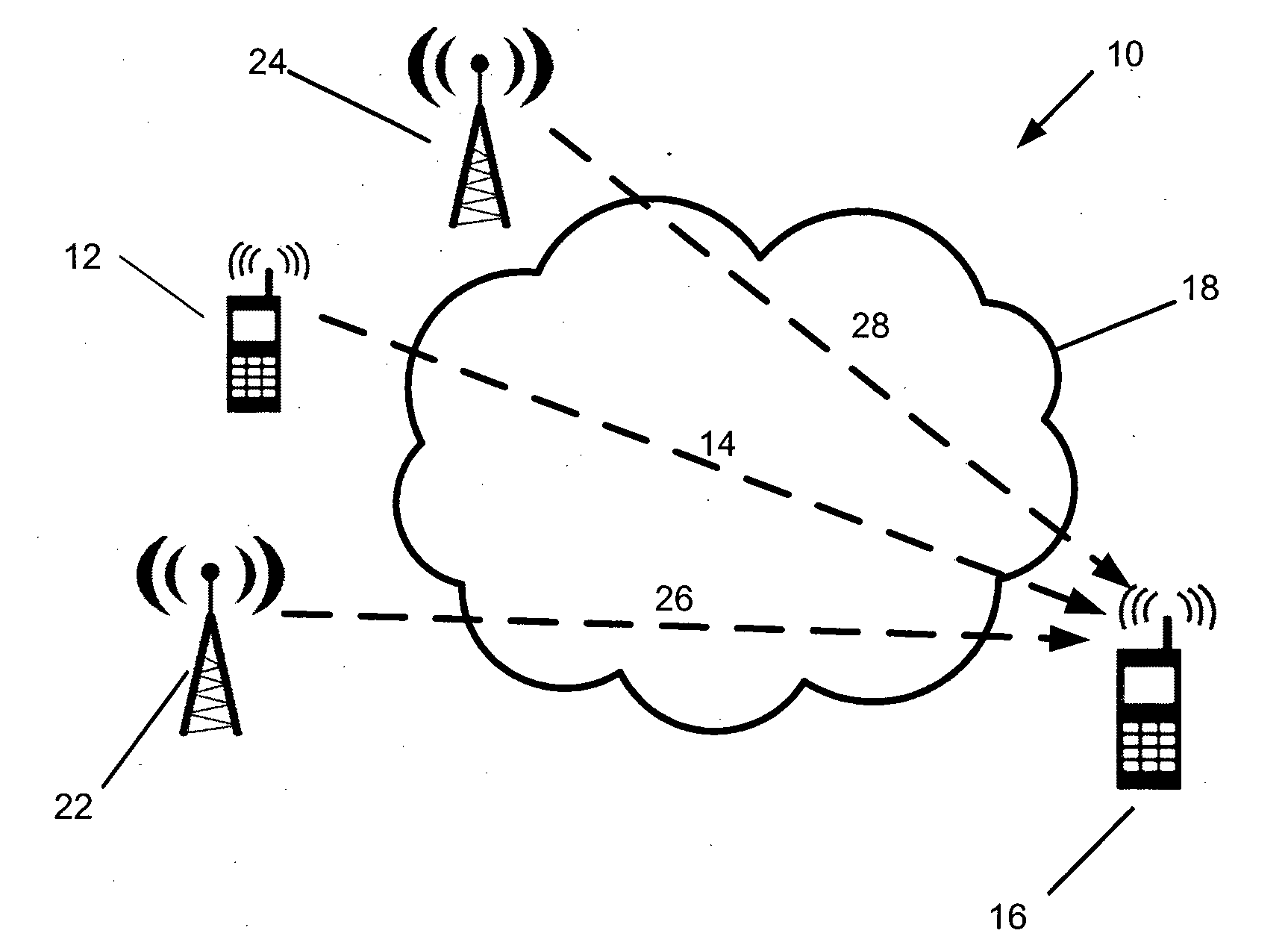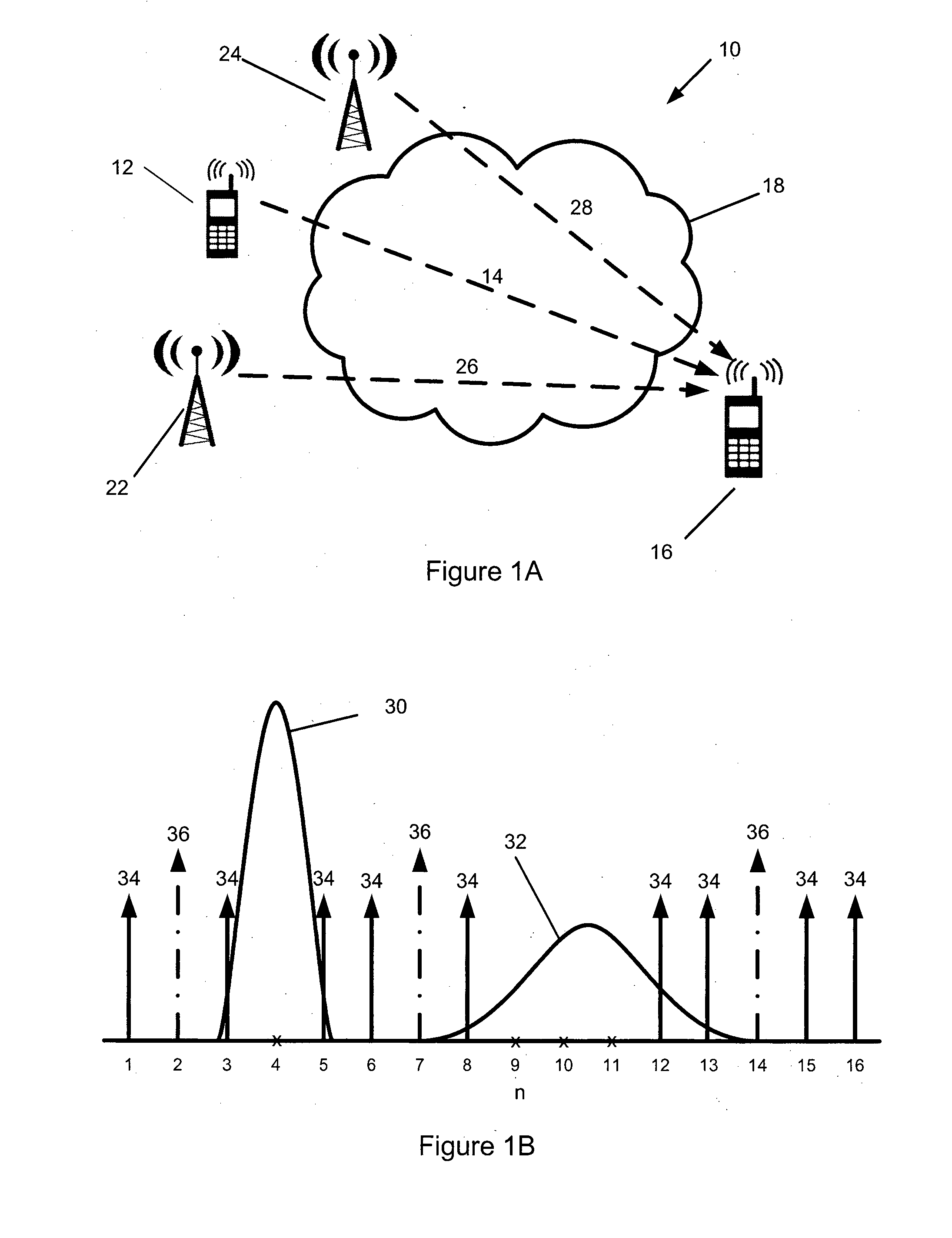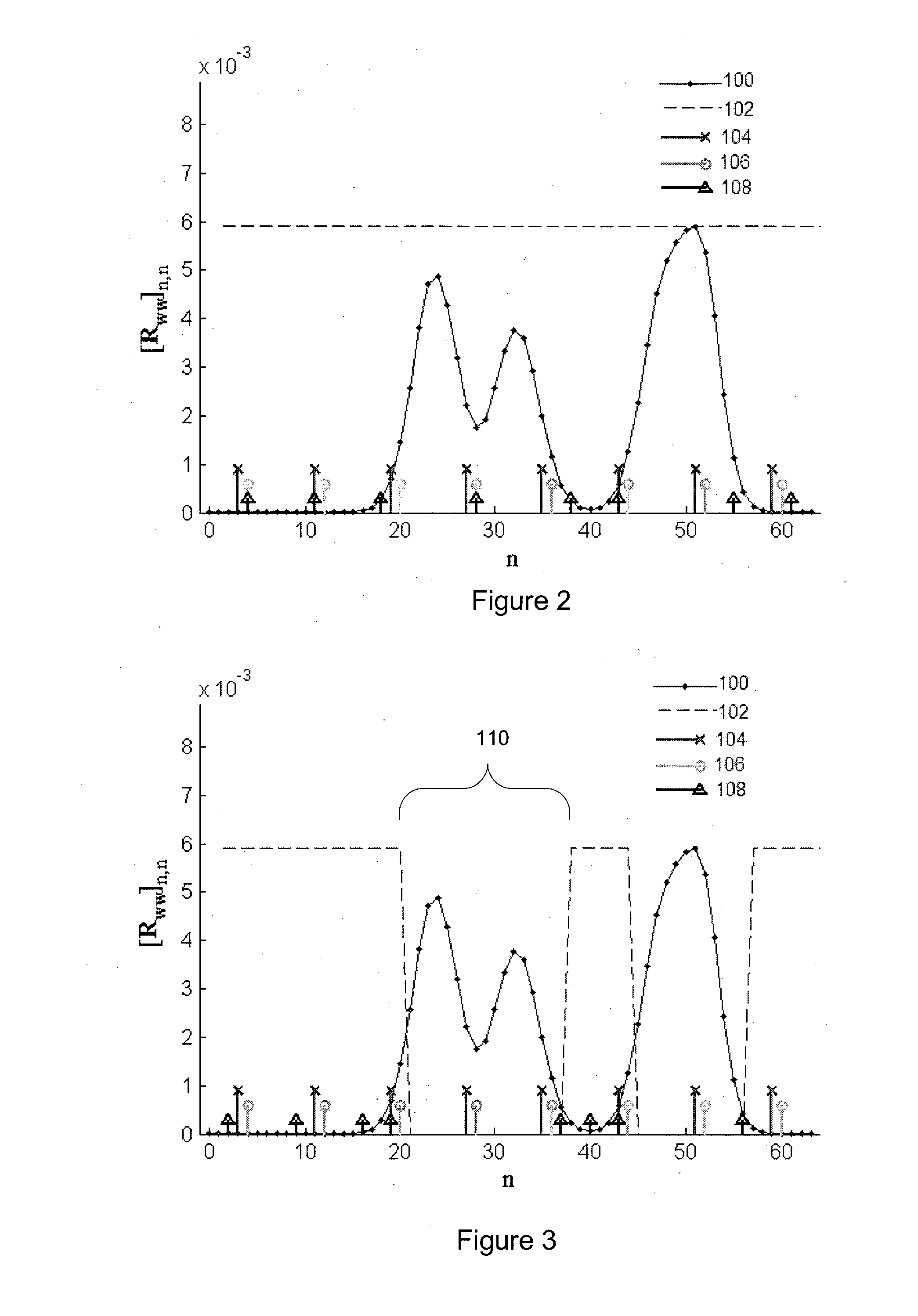Method for improving channel estimation performance in dynamic spectrum access multicarrier systems
- Summary
- Abstract
- Description
- Claims
- Application Information
AI Technical Summary
Benefits of technology
Problems solved by technology
Method used
Image
Examples
Embodiment Construction
[0034]The following is a list of the acronyms used in this specification and their meanings:[0035]CFR Channel Frequency Response[0036]CIR Channel Impulse Response[0037]CDMA Code Division Multiple Access[0038]DFT Discrete Fourier Transform[0039]DSA Dynamic Spectrum Access[0040]ES Equally Spaced[0041]IDFT Inverse Discrete Fourier Transform[0042]IFDMA Interleaved Frequency Division Multiple Access[0043]LSSE Least Sum of Square Errors[0044]ML Maximum Likelihood[0045]MMSE Minimum Mean Square Error[0046]OFDM Orthogonal Frequency Division Multiplexing[0047]PAR Peak to Average power Ratio[0048]PP Pilot Pattern[0049]PSD Power Spectral Density[0050]SIR Signal-to-Interference power Ratio[0051]SNR Signal-to-Noise power Ratio[0052]SSE Sum of Square Errors[0053]WGN White Gaussian Noise
[0054]The following is a list of certain important variables used in this specification and their meanings:[0055]Rξξ The interference covariance matrix[0056]Rνν The White Gaussian noise covariance matrix[0057]Rww Th...
PUM
 Login to View More
Login to View More Abstract
Description
Claims
Application Information
 Login to View More
Login to View More - R&D
- Intellectual Property
- Life Sciences
- Materials
- Tech Scout
- Unparalleled Data Quality
- Higher Quality Content
- 60% Fewer Hallucinations
Browse by: Latest US Patents, China's latest patents, Technical Efficacy Thesaurus, Application Domain, Technology Topic, Popular Technical Reports.
© 2025 PatSnap. All rights reserved.Legal|Privacy policy|Modern Slavery Act Transparency Statement|Sitemap|About US| Contact US: help@patsnap.com



